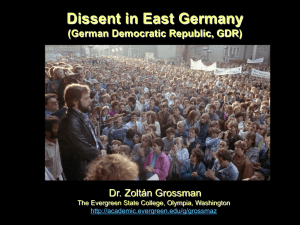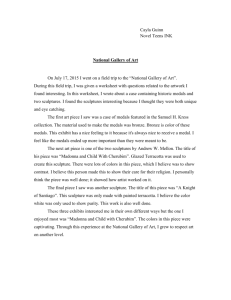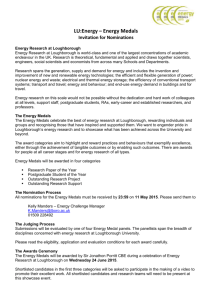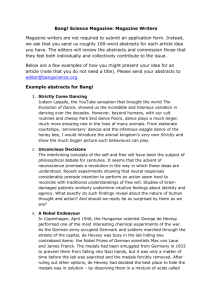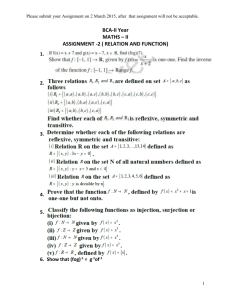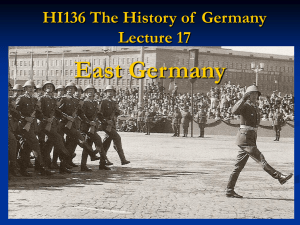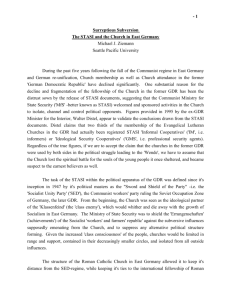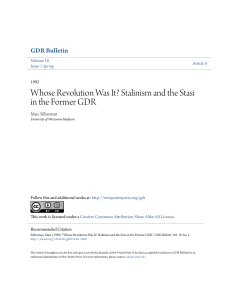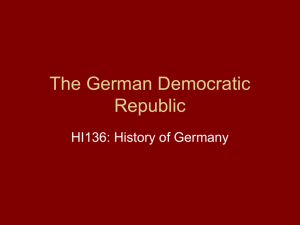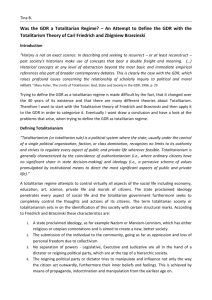August 2010 Meeting - West Midlands Police Military History Society
advertisement
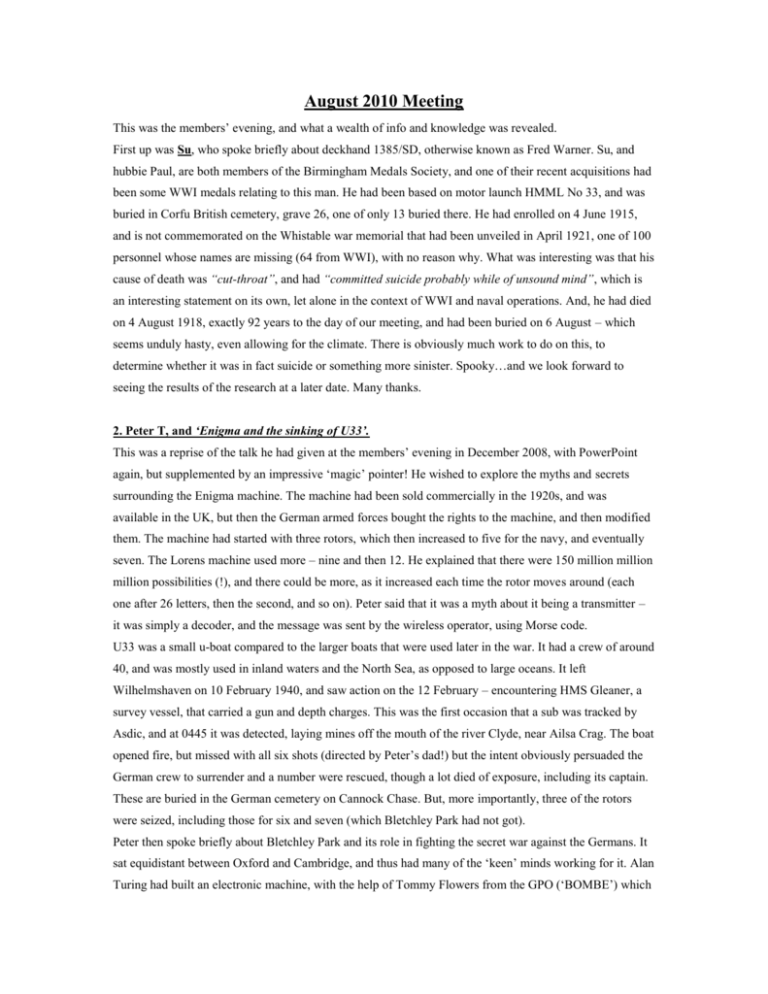
August 2010 Meeting This was the members’ evening, and what a wealth of info and knowledge was revealed. First up was Su, who spoke briefly about deckhand 1385/SD, otherwise known as Fred Warner. Su, and hubbie Paul, are both members of the Birmingham Medals Society, and one of their recent acquisitions had been some WWI medals relating to this man. He had been based on motor launch HMML No 33, and was buried in Corfu British cemetery, grave 26, one of only 13 buried there. He had enrolled on 4 June 1915, and is not commemorated on the Whistable war memorial that had been unveiled in April 1921, one of 100 personnel whose names are missing (64 from WWI), with no reason why. What was interesting was that his cause of death was “cut-throat”, and had “committed suicide probably while of unsound mind”, which is an interesting statement on its own, let alone in the context of WWI and naval operations. And, he had died on 4 August 1918, exactly 92 years to the day of our meeting, and had been buried on 6 August – which seems unduly hasty, even allowing for the climate. There is obviously much work to do on this, to determine whether it was in fact suicide or something more sinister. Spooky…and we look forward to seeing the results of the research at a later date. Many thanks. 2. Peter T, and ‘Enigma and the sinking of U33’. This was a reprise of the talk he had given at the members’ evening in December 2008, with PowerPoint again, but supplemented by an impressive ‘magic’ pointer! He wished to explore the myths and secrets surrounding the Enigma machine. The machine had been sold commercially in the 1920s, and was available in the UK, but then the German armed forces bought the rights to the machine, and then modified them. The machine had started with three rotors, which then increased to five for the navy, and eventually seven. The Lorens machine used more – nine and then 12. He explained that there were 150 million million million possibilities (!), and there could be more, as it increased each time the rotor moves around (each one after 26 letters, then the second, and so on). Peter said that it was a myth about it being a transmitter – it was simply a decoder, and the message was sent by the wireless operator, using Morse code. U33 was a small u-boat compared to the larger boats that were used later in the war. It had a crew of around 40, and was mostly used in inland waters and the North Sea, as opposed to large oceans. It left Wilhelmshaven on 10 February 1940, and saw action on the 12 February – encountering HMS Gleaner, a survey vessel, that carried a gun and depth charges. This was the first occasion that a sub was tracked by Asdic, and at 0445 it was detected, laying mines off the mouth of the river Clyde, near Ailsa Crag. The boat opened fire, but missed with all six shots (directed by Peter’s dad!) but the intent obviously persuaded the German crew to surrender and a number were rescued, though a lot died of exposure, including its captain. These are buried in the German cemetery on Cannock Chase. But, more importantly, three of the rotors were seized, including those for six and seven (which Bletchley Park had not got). Peter then spoke briefly about Bletchley Park and its role in fighting the secret war against the Germans. It sat equidistant between Oxford and Cambridge, and thus had many of the ‘keen’ minds working for it. Alan Turing had built an electronic machine, with the help of Tommy Flowers from the GPO (‘BOMBE’) which later became “Collossus” – a vast machine that used 1500 valves. This provided the biggest advance in code breaking, and at speed. Peter remarked that it will be good to see it reconstructed when we visit it on the annual trip. Varied questions followed, which Peter answered fully, including the premise made by Jock Gardner at a talk he gave to the Society in October 2006 that the information gleaned from Enigma was of a more strategic value rather than at a tactical level. A thoroughly engrossing talk, with a nice personal connection – and I loved that marker! 3. Paul H, and ‘Recent acquisitions’ Paul showed us a trio of WWI medals, that were extremely rare: a 1914 Star (ie for those who served in the BEF from 1 August to 22 November 1914), a British war medal and a Victory medal. They belonged to Lt Com. Barrington George Dashwood-Stopford, RN. He had joined the navy as a midshipman in 1906, became a Lieutenant in 1909, and resigned his commission in 1910. In August 1914 he found himself on board the SS Gloucester Castle, along with 25 civilian motorists and their cars, who all belonged to the RAC. They embarked on 23 August bound for Le Havre and then Amiens, where he drove for the General Staff. He apparently wore a khaki uniform but with no badges, only those of the RAC. He received 10f per diem, plus free petrol and rations. The Star was inscribed on its reverse “Mr – Driver”. By October 1914 there were a further 46 drivers; by January 1915 he had a temporary commission; he resigned on 1 August 1916, with no reason being given, and he died on 19 July 1930. Paul then talked about a postcard and some medals: the card was from Belgium, c1915, showed a Rolls Royce, with an AA badge on the front. Probably near Ypres, and it showed a British Red Cross driver and some mechanics. The unit was either Motor Ambulance 2 or 4, and when Paul came to check his ‘bible’ on these units he discovered a notation which meant that he had some medals, that probably belonged to the driver – possibly Percy Freestone. Which would mean it was unit number 2. An amazing story and coincidence, linking up the two components of the story, ie medals and postcard. A heart warming story, well delivered, using PowerPoint. 3. Alun, and ‘After the Cold War: the private side of German reunification’ He took his audience back to the days of the Cold War and MAD (Mutually Aided Destruction) that actually help stop nuclear war between the two superpowers of the USA and the USSR. Speaking about the effects of glasnost and perestroika on the eastern bloc meant the disintegration of communism and the gaining of independence for the former satellite countries. East Germany (the GDR) came out of it badly, as it had always been the one hard line state that had supported the policies of the USSR with blind obedience – not for it the wishy-washy politics of Hungary or Czechoslavakia. Indeed it had its own secret police, the Stasi, modelled on the KGB and just as ruthless. The GDR was split into areas, each with its own Stasi HQ, and they collected information on its own citizens: by 1989 some 110,000 full-time employees worked for the organisation, making it the country’s second largest employer (after the army); there were over 6 million dossiers in a country of onl1y 17 million, and it was kept on 100 miles of shelving. There were also one million pictures, along with 200,000 tapes – all collected by its vast army of unofficial collaborators, who for various reasons spied on family, friends and alleged ‘asocials’. When the change came in 1989 all this was discovered, but it was in a climate of mistrust and suspicion: on the west side there was much pining for the old and secure ‘Bonn Republic’, while many in the old GDR defended their lost Communist world. Add to this the economic difficulties, where salaries in the east were a fraction of what was paid in the west, then there was a feeling that they had not so much achieved national independence but instead had been absorbed by its old Cold War rival. What the citizen could do, however, was to insist on how the Stasi files were to be treated. The amount of material was immense, with much of it shredded, but it was finally decided that citizens would have a chance to see their own files. The Volkskammer, the GDR parliament first suggested it, as it was about to be disbanded, and it was endorsed by the Bunderstag, the new parliament that represented the united Germany, in a bill that was passed on 20 December 1991. The East Germans had decided that it was “our dirty laundry and our stink and it is up to us alone to clean it up”. These were strong words but were respected by the west – a stand which went a long way to reconciling the two political systems. Thus power and knowledge was to be returned to the people. Eventually some files were made available, though it took some 15 years to piece together 350 sacks. Enter Dr Betram Nickolay, who invented a scanner that re-assembled, digitally, the ripped paper, and so far 40 bags have been reconstructed, with each bag containing about 5,000 pages and each page torn into at least 15 pieces, so a three million-piece jigsaw! There are plans to build an industrial scale machine, capable of 10,000 sheets an hour, so the process will be speeded up. And it needs to be: to date there have been 300,000 requests for screening public jobs, and between 1990 and 1993 over two million people had applied to see their files; at present the current rate is 8,000 a year. The Stasi files were interesting as a social experiment in how to treat citizens after a traumatic change in their lives: reclaiming one’s file was a way of taking back stolen life stories, a way of confronting a not very pleasant past, offering a small sense of justice for those who had suffered at the hands of the regime. As such it was an important part of reunification and its aftermath.
